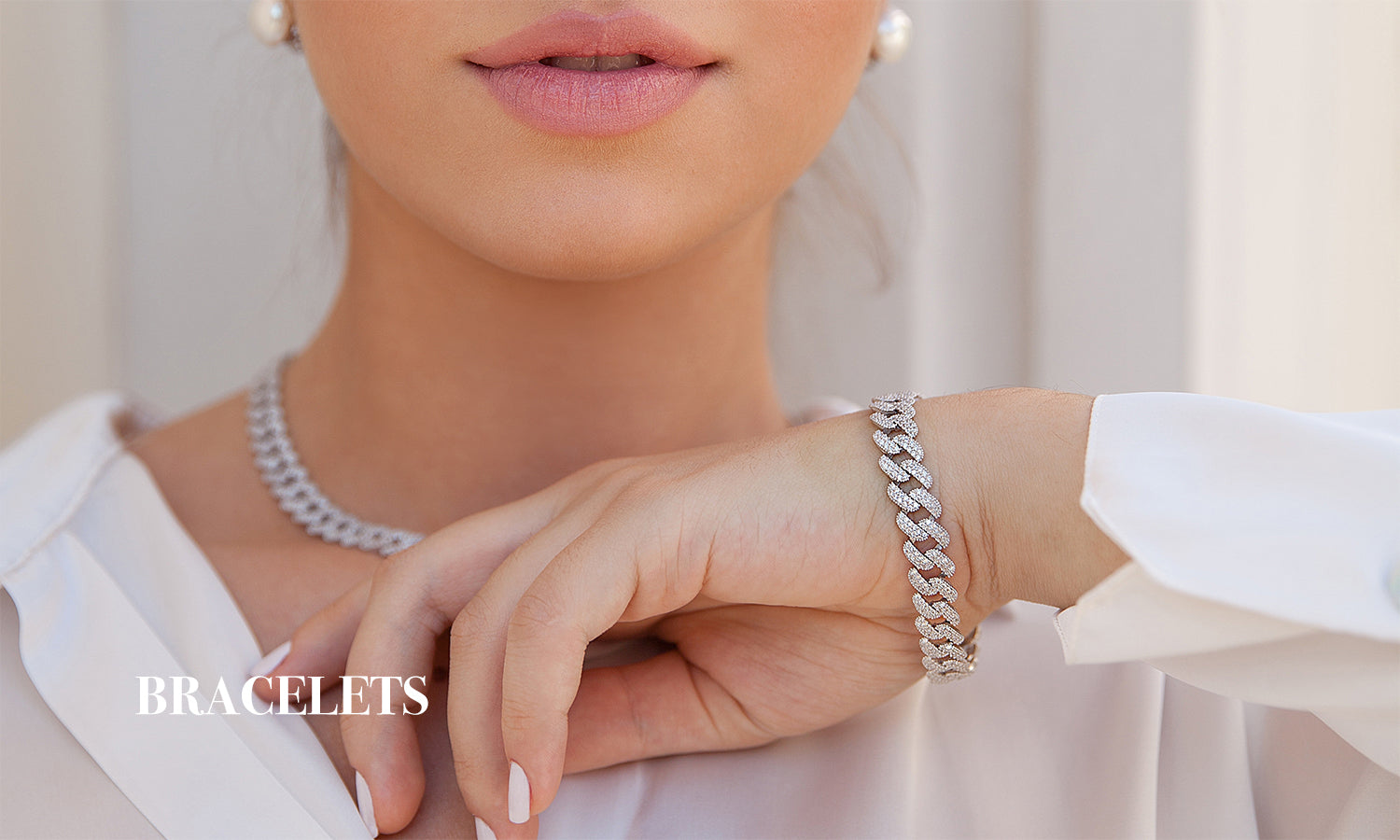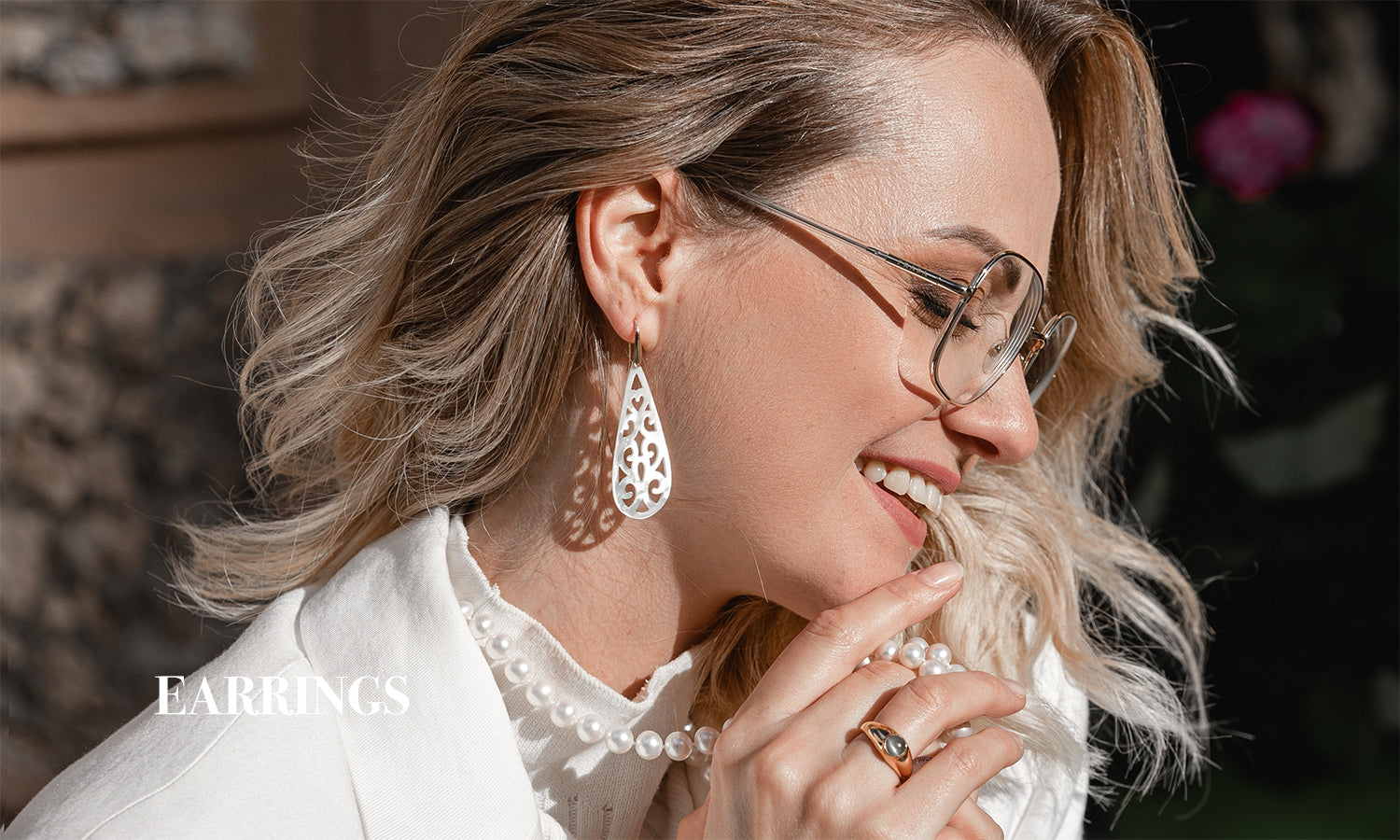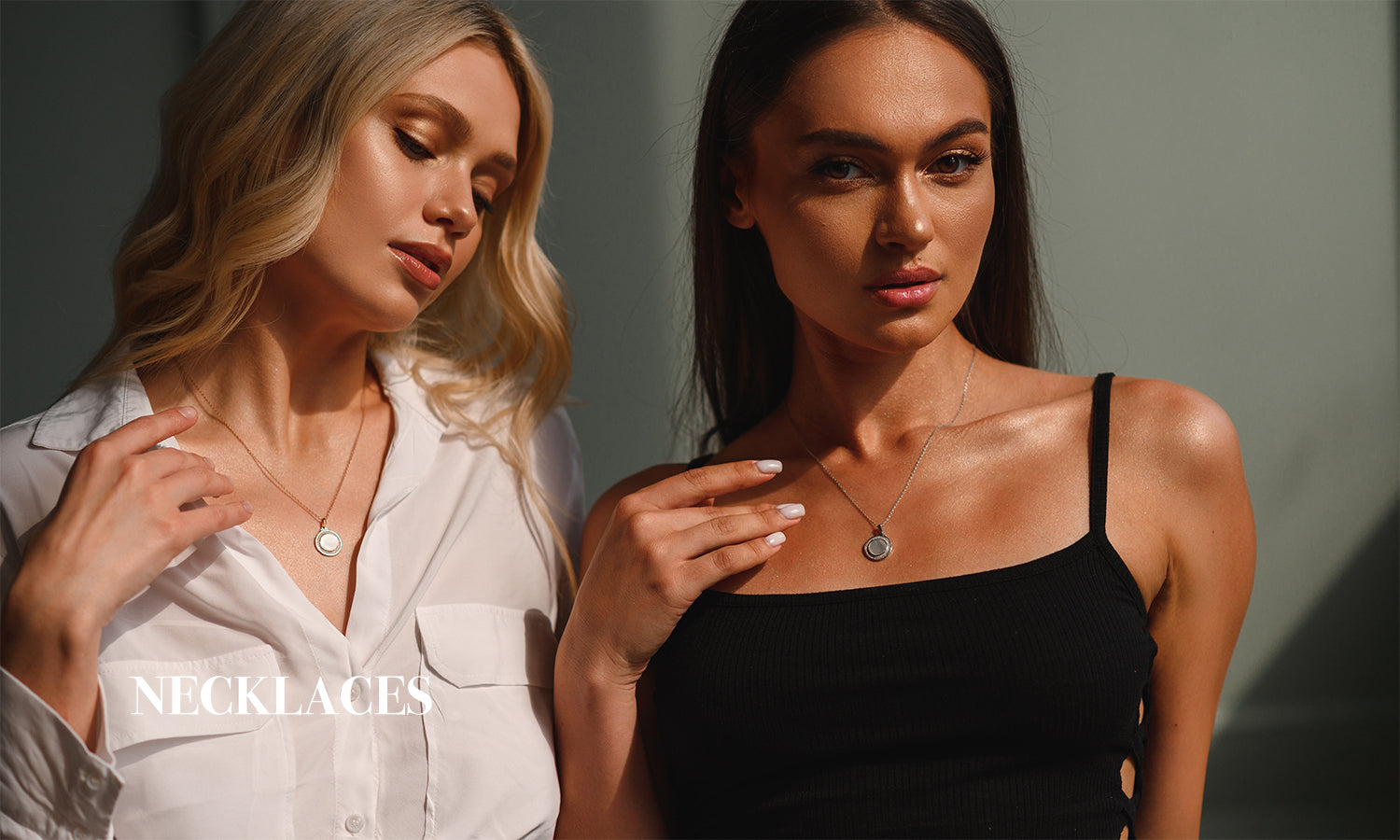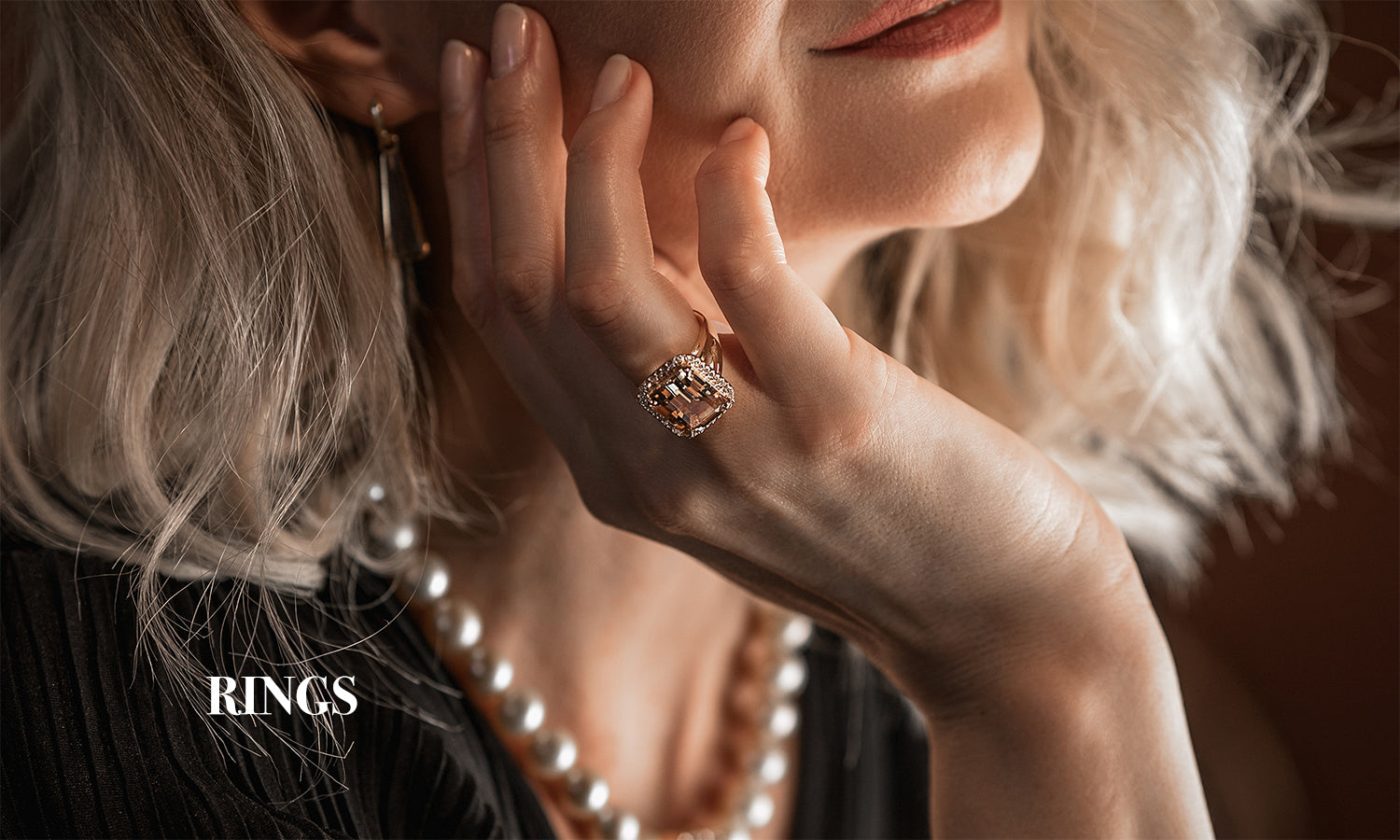Flawless Moissanite: It’s all in the shape!
Emmeline Smith explores a variety of stunning stone shape cuts to help you select the ultimate engagement ring
If you’re looking for the perfect engagement ring, you’ll already know that there’s a wonderful world of gemstone cuts to choose from, Planderful.
Popular Moissanite Shapes
1.1 Round
The round cutting is the use of optical theory and precise mathematical calculations by professional cutters for hundreds of years to continuously optimize the fire and refractive index of round gems. With excellent polishing and symmetry, the brilliant light of round moissanite is maximized. Round moissanite accounts for 70% of the total market share. Round moissanite is usually cut brilliantly and has 57 facets, which will give the effect of "hearts and arrows" when cut well. Round moissanites are available in almost all styles, from classics to the most innovative designs.
1.2 Princess Square
Fashionable and beautiful princess square, also known as “princess-cut”. The ideal princess square is a complete square with four sharp right angles. The princess square is a symbol of fashion and is the most popular shape, following round-cut. The beautiful brilliance of the princess cut and the unique square cut make the princess cut moissanite ring look more charming and emotional, making it a popular choice for rings.
1.3 Emerald Shape
The emerald shape has a unique optical visual appearance, with a wide table and looks extremely elegant and clear, however it is not as bright and sparkling as a round moissanite. The step cut highlights the clarity of the gemstone. If the clarity of the emerald-cut gemstone is low, there are usually many more obvious inclusions than round diamonds. The clarity of moissanite is generally VVS or above, so there is no need to worry about inclusions. In addition, the emerald-shaped step cut can also be applied to the square moissanite, also known as the asscher square (positive emerald).
1.4 Asscher/True Emerald
The Asscher square has a classic temperament and is very suitable for wearers with a fashion sense of smell. The asscher cut is the same as the emerald cut, the only difference between them is square, whereas the emerald is rectangular. Likewise, if an Asscher-cut gemstone is of lower clarity, it will usually have significantly more inclusions than a round diamond. Moissanite is generally VVS or above, so don’t worry.
1.5 Marquise / Marquise
Marquise is a very stylish cut. The marquise-shaped moissanite has two obvious advantages. One, it can increase the plane area of the moissanite to the highest level, making it appear larger in appearance. Also, marquise brilliant-cut moissanite is even more beautiful than round or pear-shaped side stones sometimes, as the length of the marquise diamond makes the fingers appear thinner.
1.6 Oval
The oval cut is named directly for its shape, and the oval moissanite is also brilliantly cut, so it has a beautiful sparkle, similar to a round diamond. The oval shape is also very popular because its length accentuates the slenderness of the fingers, especially among women with smaller palms.
1.7 Radiant
Radian is a cutting that only appeared in modern times. The shape of the radiant moissanite is the same as the emerald, and the cut is brilliant, so it has the elegance of an emerald with the sparkle of a round diamond. The radiant moissanite is very sparkling and beautiful with emerald-shaped or round side stones.
1.8 Pear/Drop
The pear-shaped moissanite is brilliant-cut, with a tip on one side and a semi-circle on the other side. It is also called a drop shape because it resembles a crystal-clear water drop. The teardrop shape has a unique charm and highlights a soft beauty, so it is also a popular choice for high-end jewelry.
1.9 Heart
The heart shape is the most popular symbol of love. This is the best wedding ring shape for the romance. Hearts can also be combined with other shapes. In terms of cutting technology, heart-shaped cutting usually uses more raw materials, because the left and right sides of the heart must be exactly the same and symmetrical regardless of shape and size.
1.10 Cushion/Pillow
The cushion shape has been popular for over a century and is one of the oldest cutting styles, and the preferred length to width ratio of the cushion shape is 1:1. The cushion cut has rounded corners and larger facets that accentuate the gem's own brilliance.
2.0 Maximum Brilliance of Flawless Moissanite
Whether stones are lab-created or mined, they don’t start out as the glistening rocks we see in the jeweller’s window. The process of getting the raw stone ready to be set into jewellery involves cutting and polishing. A professional gem-cutter will examine each stone on its own merit and work out which cut will be best to enhance its natural beauty.
Gemology is a real science, so keeping things very basic here, the intensity of a stone’s sparkle is influenced by three main things: reflection, refraction and dispersion. Reflection takes place when the light that enters the gem does not pass into it but is reflected off the internal angles and directed back out. The refracted light then exits the gem, resulting in a blinding sparkle! The more light a stone reflects, the more brilliant it is and the more stunning the lustre is.
Most stone cuts are multi-faceted, meaning there are many sides, cut at precise angles. Usually, the stone will be flat on the top, with various polished faces, going into a point at the back. All of these angles and shapes refract the light creating the most sparkly result!
3.0 Which Metal Suits You for Your Next Piece of Jewelry?
3.1 Gold
Gold is the elemental form of the chemical element gold (Au), a soft, high-density, ductile precious metal (Precious Metal). Gold is not only an asset, but also an important means for human beings to store wealth, and can be used in jewelry industry, electronics industry, modern communication, aviation industry, food industry, cosmetics and so on.
As a precious metal, gold has good physical properties, including: good flexibility, easy forging, not easy to oxidize, high density, high ductility and toughness. These properties make gold easy to be made into a variety of jewelry.
3.2 Yellow Gold
The so-called Yellow Gold refers to the synthesis of gold and other precious metals (such as silver, zinc, nickel, etc.), and the purity of gold can be indicated by "Karat", that is, the proportion of pure gold in the alloy. The calculation method of Yellow Gold is to divide pure gold into 24 parts, and the K number represents the gold content. The larger the number, the higher the gold content. For example, 18K=18/24=75% of gold.
3.3 White Gold
Similar to Yellow Gold, White Gold is an alloy made by mixing gold and at least one white metal, such as silver, palladium, etc. White gold has good reflectivity, can show its magnificent luster, and has high hardness.
3.4 Rose Gold
Rose Gold is a combination of gold and copper, and copper is the main cause of rose color. Rose gold has a bright color, is harder than pure gold, and has strong ductility, so it is widely used in jewelry manufacturing.
3.5 Platinum
Platinum (chemical symbol Pt) is a natural and rare white metal with higher density than gold, chemical stability, high ductility, and good corrosion resistance.
The hardness of pure platinum is very soft, so other precious metals need to be added during production to enhance the hardness of platinum itself and make the inlay of jewelry more solid.
Platinum Guild International (PGI®) clearly stipulates that Pt850 (platinum content of 85%) or more can be called platinum. Generally, Pt900, Pt950 and Pt990 (platinum content of 90%, 95% and 99%) are commonly found on the market. Pt refers to the chemical symbol of platinum. Consumers can know the platinum purity of the jewelry they buy based on the imprints of these jewelry. The higher the coefficient, the more expensive the price.
4.0 Step or brilliant cut
To get you started, there are two basic types of stone cuts – Step and Brilliant. A brilliant cut is the more complicated design, created to enhance maximum sparkle, while a step cut is more simple and ideally suitable for a stone with excellent clarity, as it really shows off a stone’s natural beauty.
Brilliant cut stones often have 58 angled facets – sometimes even more – which gives the cut maximum sparkle. While a step cut will have parallel lines, forming ‘steps’ and are a more subtle shape, enhancing the clarity and colour of the gem.
5.0 Who made the best Moissanite in the world
As the world's most brilliant gem®, Forever One™ moissanite outshines all the rest. As unique as you are, Forever One embodies beauty and elegance in its own way. This incredible white gemstone is full of fire and perfect for those who want the highest quality responsibly sourced gemstones at an accessible price.
Planderful sells amazing flawless stones available in various shapes and sizes, from a classic 0.50ct (6.0 x 4.5mm), right up to a whopping 5.00ct (12 x 10.0mm)! Natural diamonds and Lab Grown diamonds are made from carbon and are the hardest known mineral, however moissanites come a very close second. If you want to be unique, customize it! If you have any specific enquiries, just email it to customerservice@planderful.com and discuss more.





